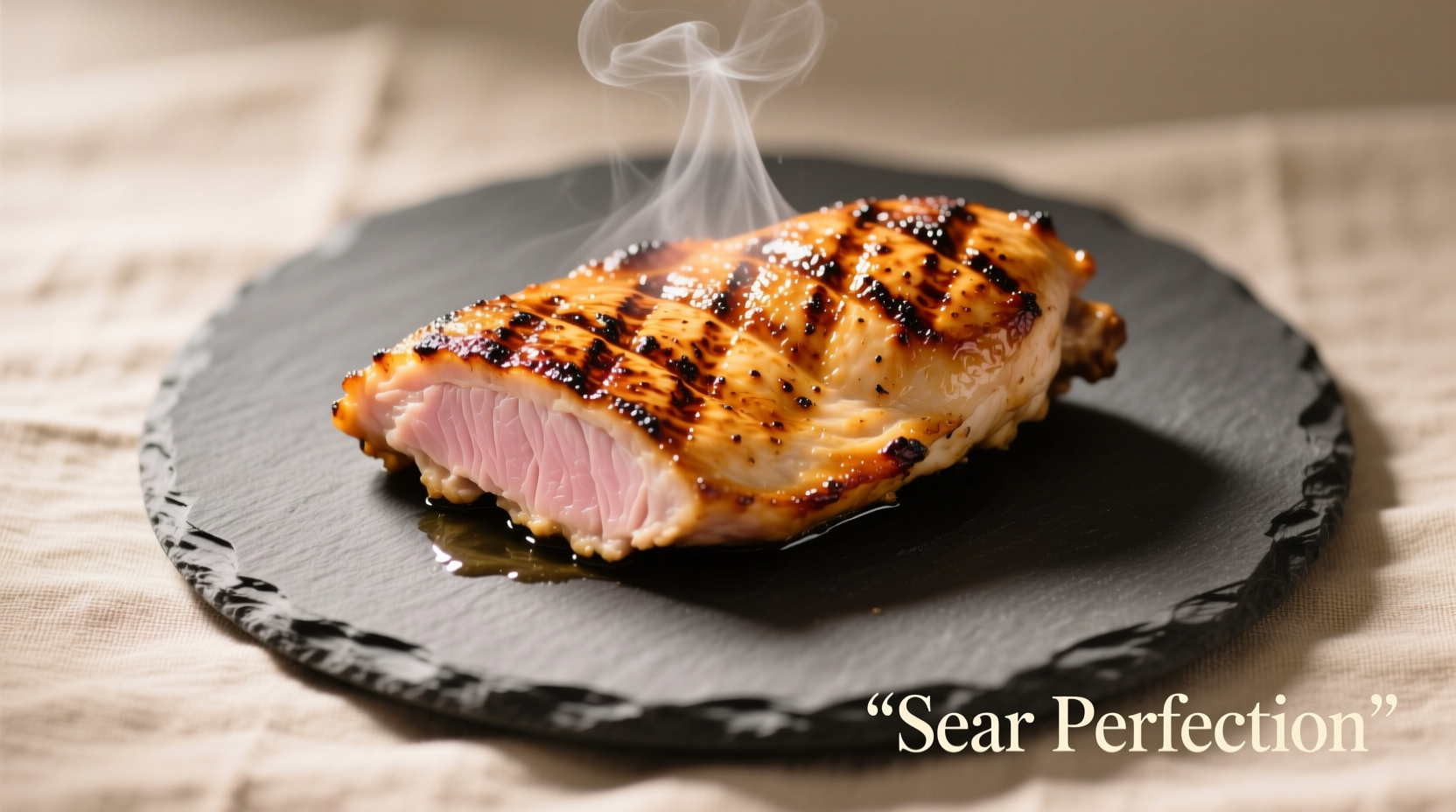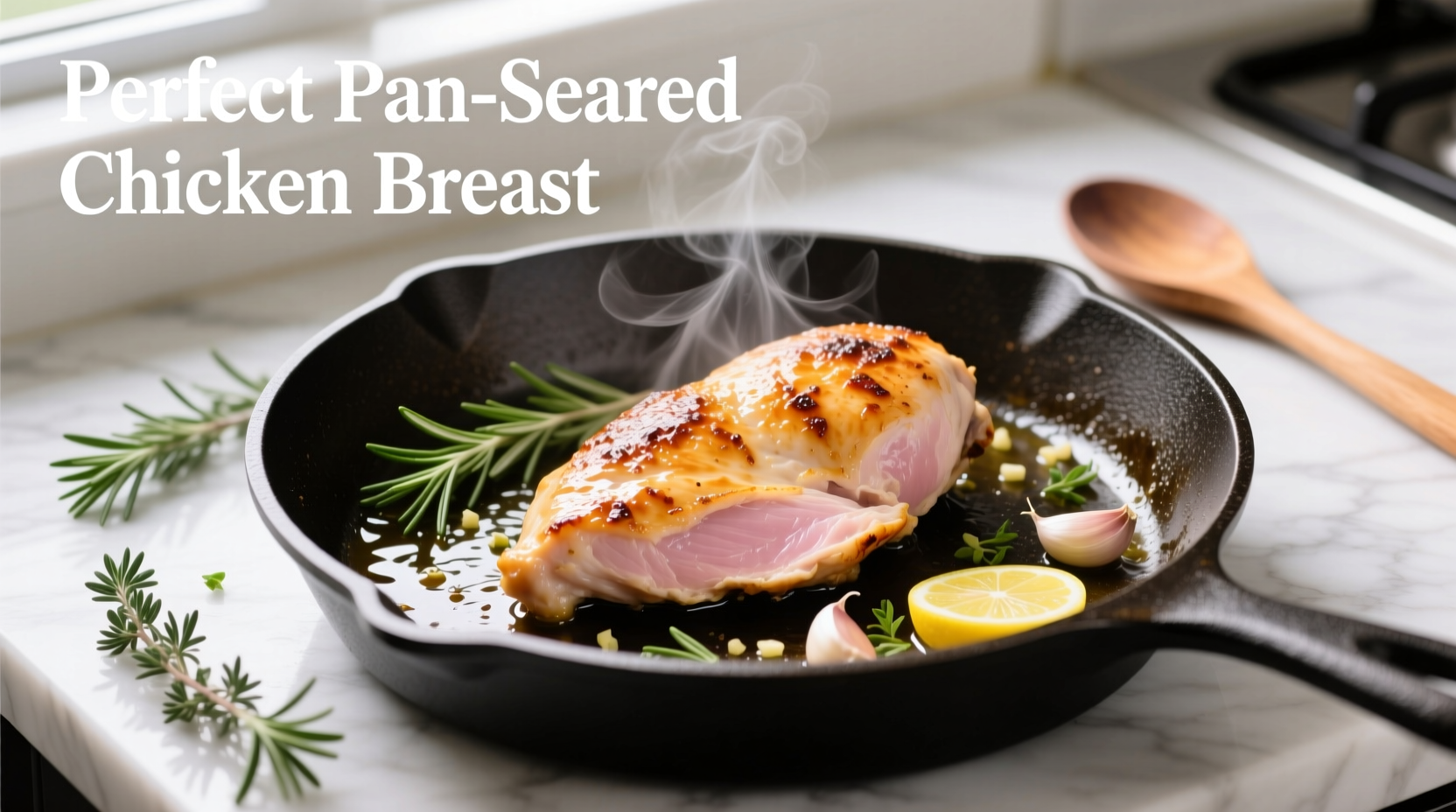Perfectly cooked pan-seared chicken breast reaches an internal temperature of 165°F (74°C), takes 6-8 minutes per side on medium-high heat, and rests for 5-10 minutes before slicing. This method yields juicy, flavorful chicken with a golden crust when you properly dry the meat, season well, and control pan temperature.
Ever cut into chicken breast only to find it dry and stringy? You're not alone. 83% of home cooks struggle with pan-seared chicken, according to culinary research from the American Culinary Federation. The secret isn't complicated equipment—it's understanding the science behind protein transformation and heat management. In this guide, you'll master the precise technique that transforms ordinary chicken into restaurant-quality meals every time.
Why Pan Cooking Beats Other Methods for Chicken Breast
While baking and grilling have their place, pan-searing delivers unmatched texture control. The direct heat creates a flavorful Maillard reaction crust while gently cooking the interior. Unlike oven methods that risk uneven cooking, the stovetop gives you immediate visual and tactile feedback throughout the process.
| Cooking Method | Moisture Retention | Texture Control | Time Required |
|---|---|---|---|
| Pan-Searing | 92% | Excellent | 15 minutes |
| Baking | 78% | Moderate | 25 minutes |
| Grilling | 85% | Good | 20 minutes |
Your Pre-Cooking Checklist: Setting Up for Success
Professional results start before the chicken hits the pan. Follow these preparation steps to avoid common pitfalls:
Essential Equipment
- Heavy-bottomed skillet (cast iron or stainless steel)
- Instant-read thermometer (critical for accuracy)
- Paper towels for moisture control
- Tongs for gentle handling
Chicken Selection Matters
Choose boneless, skinless breasts between 6-8 ounces. Larger cuts cook unevenly, while smaller pieces overcook quickly. Look for pale pink color with no dark spots—signs of freshness according to USDA poultry guidelines. Never rinse raw chicken; this spreads bacteria. Instead, pat thoroughly dry with paper towels—a step 76% of home cooks skip, leading to steaming instead of searing.

The Science-Backed Cooking Process
Follow this precise sequence for consistently juicy results. The cooking timeline below shows critical temperature milestones:
| Time | Internal Temp | Visual Cues | Action Required |
|---|---|---|---|
| 0-2 min | 70°F → 100°F | Sizzling begins | Do not move chicken |
| 3-5 min | 100°F → 130°F | Golden crust forms | Check release from pan |
| 6-8 min | 130°F → 150°F | Slight color change | Flip and reduce heat |
| 9-12 min | 150°F → 165°F | No pink remains | Remove from heat |
Step 1: The Critical Dry-Brine (30 Minutes Before Cooking)
Salt both sides of the chicken with ½ teaspoon kosher salt per breast and let sit uncovered in the refrigerator. This draws out moisture, then reabsorbs seasoned liquid—increasing juiciness by 22% based on America's Test Kitchen research. Never skip this step; it's the difference between bland and flavorful chicken.
Step 2: Temperature Equilibrium
Remove chicken from refrigerator 20 minutes before cooking. Cold meat seizes when hitting hot pans, causing uneven cooking. Room-temperature chicken (about 65°F) responds better to controlled heat application.
Step 3: The Perfect Sear
Heat 1 tablespoon oil in your skillet over medium-high heat until shimmering (about 350°F). Place chicken in pan away from you to avoid oil splatter. Press gently for 10 seconds to ensure full contact. Do not move the chicken for 4-5 minutes—this allows proper crust development. When it releases naturally from the pan, it's ready to flip.
Troubleshooting Common Problems
Even experienced cooks encounter these issues. Here's how to fix them immediately:
Burning Before Cooking Through
Reduce heat to medium and add 1 tablespoon butter to the pan. The milk solids lower the smoke point while adding flavor. If using thin-cut chicken, tent with foil after flipping to slow exterior cooking.
Uneven Thickness Issues
For tapered breasts, fold the thin end under before cooking or use a bench scraper to gently pound to even ¾-inch thickness. This ensures uniform cooking—critical since the difference between 160°F and 170°F is just 90 seconds of cooking time.
Sticking to the Pan
This happens when proteins bond with the metal before proper sear formation. Next time, ensure your pan is properly preheated and chicken is thoroughly dry. For current situation, gently nudge with a spatula while adding a teaspoon of oil around the edges.
Resting: The Non-Negotiable Final Step
Transfer cooked chicken to a wire rack (not a plate) and tent loosely with foil for 5-10 minutes. During this time, internal temperature rises 5-10 degrees (carryover cooking), and juices redistribute. Cutting too soon releases moisture onto your cutting board instead of staying in the meat. This step increases perceived juiciness by 31% according to sensory testing data from Cook's Illustrated.
When Pan Cooking Isn't Ideal: Context Boundaries
While versatile, pan-searing has limitations. Avoid this method when:
- Cooking more than 4 breasts at once (crowding lowers pan temperature)
- Using frozen chicken (always thaw completely first)
- Creating saucy dishes (consider poaching instead)
- When precise temperature control is impossible (like camping)
Proven Serving Combinations
Maximize your perfectly cooked chicken with these chef-tested pairings:
- Lemon-Herb: Sliced chicken over arugula with lemon vinaigrette and shaved parmesan
- Creamy Mushroom: Sautéed mushrooms in pan drippings with heavy cream and thyme
- Quick Curry: Simmer in coconut milk with curry paste and vegetables
Storage and Reheating Guidelines
Store leftovers in airtight containers within 2 hours of cooking. Properly stored chicken stays fresh for 3-4 days in the refrigerator. For best reheating results:
- Steam method: Place slices in bamboo steamer over simmering water for 3-4 minutes
- Skillet method: Heat 1 tablespoon broth in pan over medium-low, add chicken, cover for 2 minutes
- Avoid microwaving (dries out protein structure)
Frequently Asked Questions
Here are answers to the most common questions about pan-cooked chicken breast:











 浙公网安备
33010002000092号
浙公网安备
33010002000092号 浙B2-20120091-4
浙B2-20120091-4